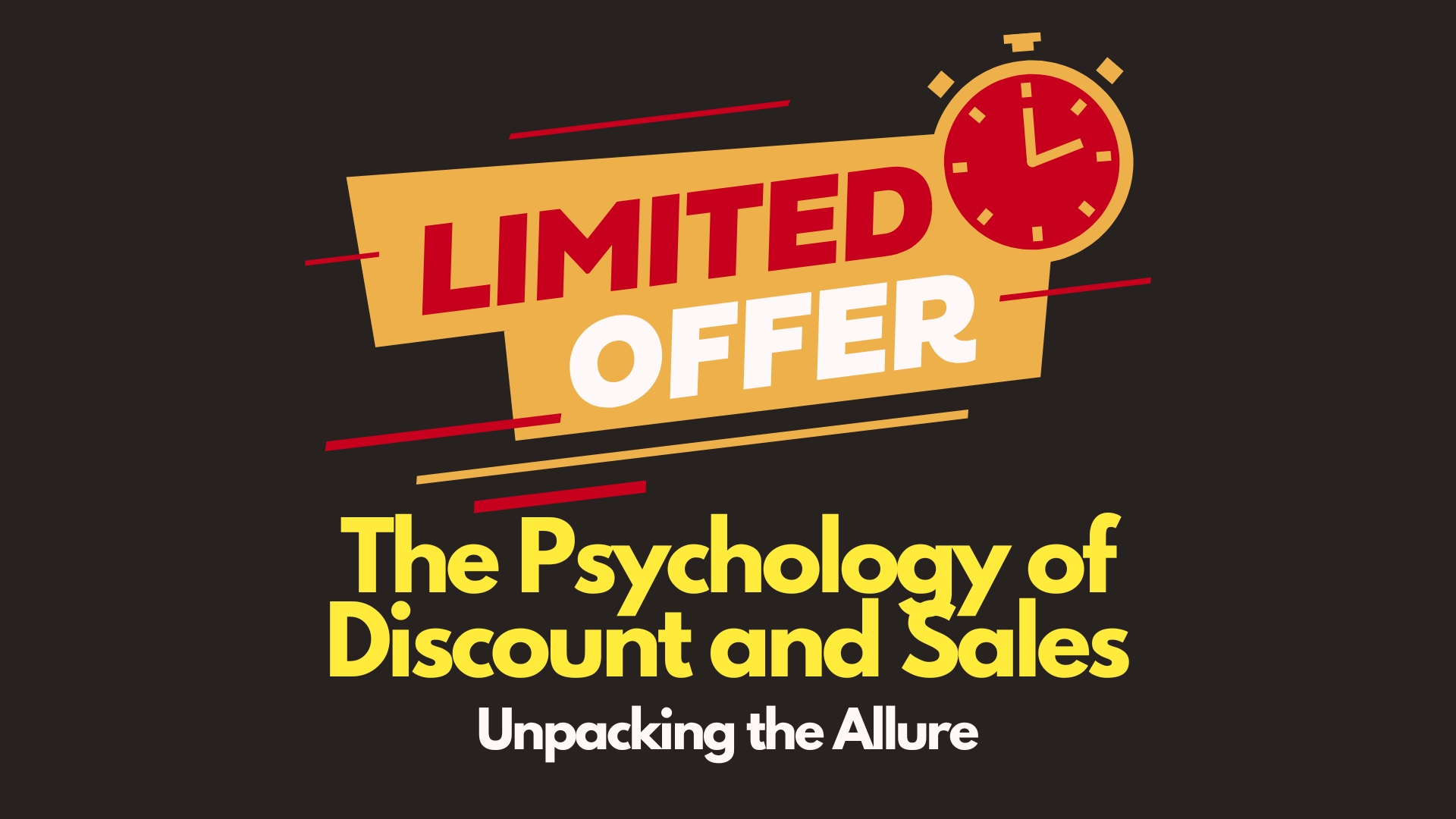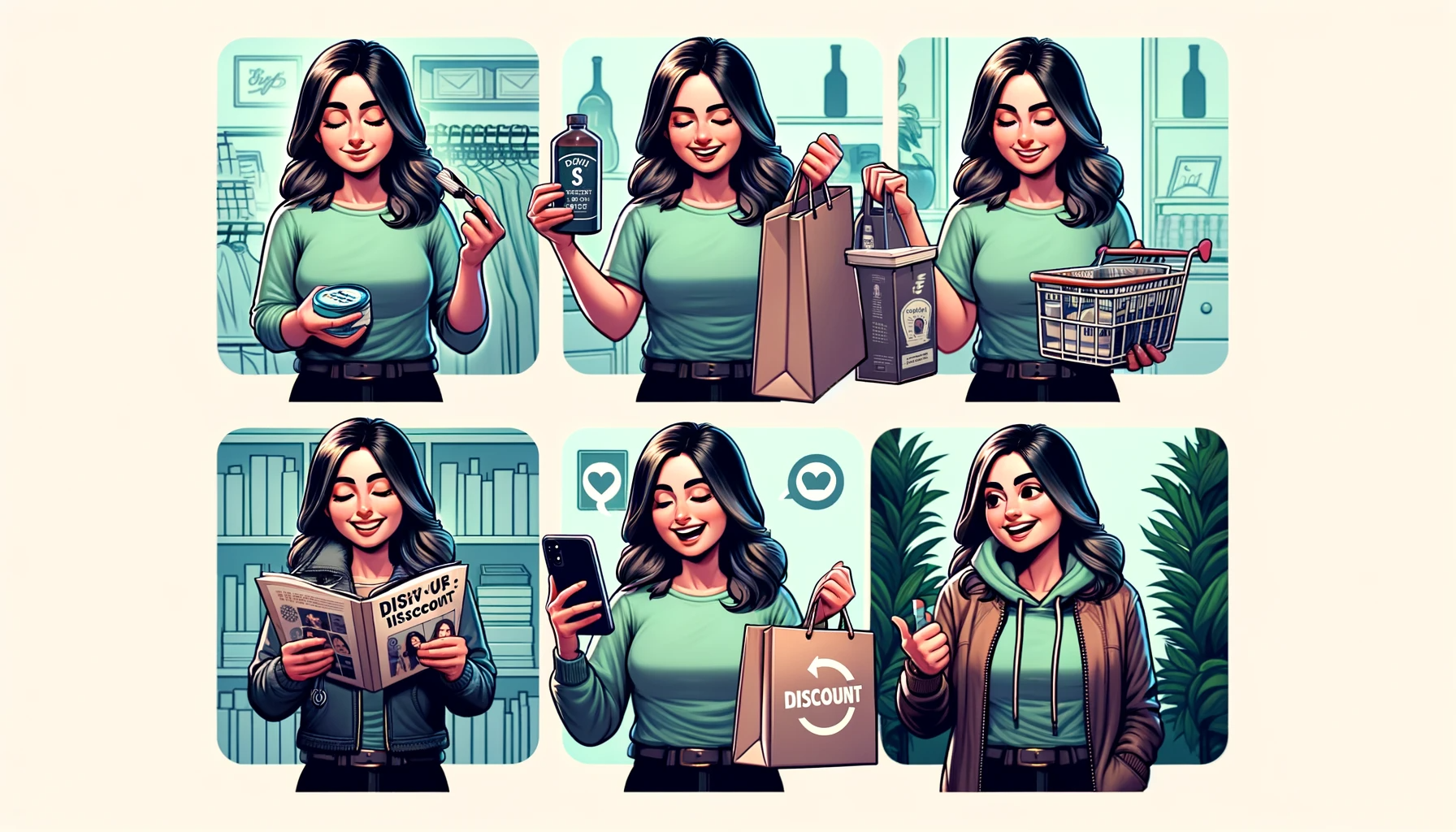Published
- 10 min read
The Psychology of Discount and Sales

| Key Takeaways |
|---|
| - Understand how discounts trigger psychological responses that drive consumer behavior. |
| - Learn how the perception of saving money can be more enticing than the actual savings. |
| - Discover the strategies behind discount pricing and their impact on sales. |
| - Explore internal and external factors influencing the effectiveness of discount strategies. |
Introduction
The siren call of a sale sign can lure even the most disciplined shoppers. Discounts and sales are not merely marketing tactics; they are psychological triggers that tap into the consumer psyche. The psychology of discount and sales is a fascinating study of human behavior, emotion, and cognition. It’s about understanding why a slashed price tag can change a consumer’s perception of value and influence their decision-making process.
The Psychological Lure of Discounts
The Thrill of the Hunt
For many consumers, hunting for deals is more than saving money; it’s an exhilarating experience. The pursuit of bargains triggers a release of dopamine, a neurotransmitter associated with pleasure and reward. When shoppers score a discount, they feel a sense of victory, akin to the satisfaction our ancestors might have felt after a successful hunt.
Perceived Value and Urgency
Discounts create a sense of increased value for money. Consumers often judge the worth of a deal not on the product’s intrinsic value but on the savings they perceive they are making. This perceived value is heightened by the urgency that sales promote. Limited-time offers and the fear of missing out (FOMO) compel consumers to act quickly, often bypassing their usual decision-making processes.
The Anchoring Effect
The anchoring effect is a cognitive bias where individuals rely too heavily on the first piece of information they see. In the context of sales, the original price becomes the anchor, and any reduction in price is perceived as a gain. This contrast effect can make the final price seem much more attractive, even if the initial price was artificially inflated.

Impact of Discount Strategies on Sales
Immediate Gratification vs. Long-Term Satisfaction
Discounts cater to the human desire for immediate gratification. The instant savings feel like an immediate reward, overshadowing the long-term benefits of the product itself. However, this can also lead to buyer’s remorse if the purchase doesn’t provide lasting satisfaction.
The Role of Exclusivity
Exclusivity can enhance the appeal of discounts. When consumers believe they’re getting a deal that’s not available to the general public, the value of the discount increases. This tactic is often used in member-only sales or targeted promotions.
Price-Quality Inferences
While discounts can drive sales, they can also impact consumers’ perceptions of quality. Often, a higher price is associated with better quality. Frequent discounts may lead consumers to question the product’s worth, potentially harming the brand’s image in the long term.
Internal and External Factors Influencing Discount Effectiveness
Discount strategies don’t operate in a vacuum. Various internal and external factors influence their effectiveness, including:
- Consumer psychology: Individual differences, such as a propensity for impulse buying or a preference for hedonic shopping, can affect how consumers respond to discounts.
- Market conditions: The economic climate and competitive landscape play a role in how consumers perceive and react to sales.
- Brand perception: A brand’s market position and consumer trust level will impact the success of discount strategies.
- Cultural influences: Cultural norms and values can shape consumers’ attitudes towards discounts and sales.
Wrap-up
The psychology of discount and sales is a complex interplay of emotional responses, cognitive biases, and social influences. By understanding the allure of sales and how discounts affect consumer psychology, businesses can craft more effective marketing strategies that not only drive immediate sales but also build long-term customer relationships.
To delve deeper into how consumer behavior shapes marketing, explore our posts on consumer behavior online vs. offline shopping dynamics and the hidden psychology behind brand loyalty.

The Science Behind Sales: Why Discounts Feel So Good
A Neurological Perspective on Spending and Saving
The act of receiving a discount goes beyond simple economics—it’s a neurological event. Discounts can light up the brain’s reward centers, much like other pleasurable experiences. When we encounter a great deal, our brains release endorphins and dopamine, providing a natural high that is associated with the pleasure of saving money. This biochemical response can be addictive, driving the allure of the next big sale.
Anchoring and Adjustment in Consumer Minds
The anchoring effect mentioned earlier plays a significant role in how consumers perceive discounts. When a product is first marked with a high price, that number sets the mental standard for its worth. Any subsequent reduction in price is measured against this anchor, making the discount appear more significant—even if the original price was never intended to be the true selling point. This psychological phenomenon can be leveraged to make discounts more appealing and drive sales.
The Power of ‘Limited Time Offers’
Creating a sense of scarcity and urgency with limited-time offers can be incredibly effective. When consumers believe that a sale is about to end, or that there is a limited quantity of products available, it can trigger a fear of missing out (FOMO). This fear can override rational decision-making, leading to impulsive purchases. The temporary nature of sales events creates a now-or-never scenario that can significantly boost sales volumes.
How Discounts Influence Decision-Making
The Role of Cognitive Dissonance
Post-purchase rationalization is a common side effect of discount shopping. Cognitive dissonance occurs when our actions (such as making an impulsive purchase) are not in line with our beliefs (like being financially responsible). Discounts can help ease this dissonance by providing a justification for the purchase—the savings made can be seen as a sensible financial decision, even if the purchase itself was not strictly necessary.
The Contrast Principle in Action
The contrast principle suggests that we perceive things differently depending on what they are compared to. In the context of discounts, a sale price can seem incredibly low when placed next to the original price. Retailers often use this principle by displaying the discounted price in much larger fonts or different colors, drawing attention to the savings and making the discount seem more substantial.
Decision Fatigue and Simplification
Decision fatigue can set in after making too many choices, leading to poorer quality decisions or impulse buys. Sales can act as a simplifier for consumers who are overwhelmed by options. A significant discount can be the deciding factor that cuts through the noise, making the decision process easier and quicker.
Crafting Discounts That Convert: A Marketing Strategy
Understanding Consumer Psychology
Marketers must understand the psychology of pricing to craft discounts that convert. This involves not just the actual price point but also how it’s presented. For instance, a $50 item with a 50% discount may seem more attractive than the same item priced at $25, even though the cost to the consumer is the same. It’s the perception of getting a deal that drives the purchase.
Balancing Perception and Reality
While discounts are a powerful tool, they must be used strategically to avoid damaging the brand’s perceived value. If a company offers discounts too frequently, consumers may start to perceive the discounted price as the real value of the product, which can harm long-term profitability. It’s a delicate balance between enticing customers with deals and maintaining a product’s perceived worth.
Integrating Discounts into the Overall Marketing Mix
Discounts should be one part of a balanced marketing strategy. They can be used alongside other marketing tactics such as loyalty programs, personalized offers, and targeted advertising to drive sales while also building brand loyalty and customer satisfaction.
Wrap-up
Discounts are a potent psychological tool that, when used correctly, can lead to increased sales and customer satisfaction. By understanding the psychological underpinnings of why discounts are so appealing, businesses can create effective pricing strategies that resonate with consumers and encourage them to make a purchase. However, it’s crucial to use discounts judiciously to ensure they enhance rather than diminish the perceived value of the products and the brand itself.
To further explore the intricacies of consumer behavior and decision-making, read about understanding consumer decision-making processes and the role emotions play in purchasing decisions.
Discount Dynamics: The Balancing Act Between Attraction and Saturation
The Attraction of ‘Getting a Deal’
The concept of ‘getting a deal’ is deeply rooted in consumer culture. Discounts often serve as a psychological signal that consumers are making a smart choice, optimizing their resources, and getting more for less. This feeling of savvy shopping is a strong motivator and can lead to increased customer loyalty if managed correctly. The idea that one is outsmarting the system or gaining more value for their money is a powerful driver in purchasing behavior.
The Risk of Discount Saturation
However, there’s a flip side to the frequent use of discounts—saturation. When consumers are bombarded with sales and discounts, they may become desensitized to these promotions. The special feeling associated with ‘getting a deal’ diminishes, and the baseline expectation for reduced prices takes over. This can lead to a situation where discounts no longer serve as an effective incentive, and instead, they become the expected norm, potentially eroding profit margins and brand value.
Crafting a Sustainable Discount Strategy
To avoid the pitfalls of discount saturation, businesses must craft a sustainable discount strategy. This involves timing sales strategically, segmenting the market to offer personalized deals, and ensuring that discounts are perceived as a bonus rather than an entitlement. It’s also important to measure the effectiveness of discount campaigns and adjust tactics based on consumer response and sales data.

The Role of Discounts in Building Brand Loyalty
Beyond the Transaction: Emotional Connections
Discounts can be a gateway to building brand loyalty, but they must be part of a larger strategy that fosters an emotional connection with the consumer. Brands that succeed in creating this connection go beyond the transactional nature of discounts and engage customers on a deeper level. This can be achieved through storytelling, personalized experiences, and consistent value alignment with the customer’s beliefs and needs.
Loyalty Programs and Experiential Rewards
Leveraging loyalty programs that offer more than just discounts can also enhance brand loyalty. By providing experiential rewards, early access to sales, or exclusive products, businesses can create a sense of belonging and appreciation that resonates with consumers on a more personal level. This approach can turn occasional buyers into brand advocates.
The Perception of Fairness and Transparency
The way discounts are presented and communicated can significantly impact brand loyalty. Transparency about pricing and fairness in discount distribution can foster trust and credibility. When consumers feel they are treated fairly and can trust a brand to offer genuine deals, their loyalty to the brand is strengthened.
Conclusion
Discounts are a double-edged sword in the realm of consumer psychology. While they can attract customers and drive sales, there is a delicate balance to maintain to ensure they don’t devalue the brand or lead to consumer fatigue. By understanding the psychological impact of discounts and strategically integrating them into a broader marketing and brand loyalty strategy, businesses can harness their power without falling prey to their potential downsides.
For further insights into the intersection of marketing and psychology, consider reading about the impact of cultural factors on consumer behavior and how marketing psychology influences consumer choices.